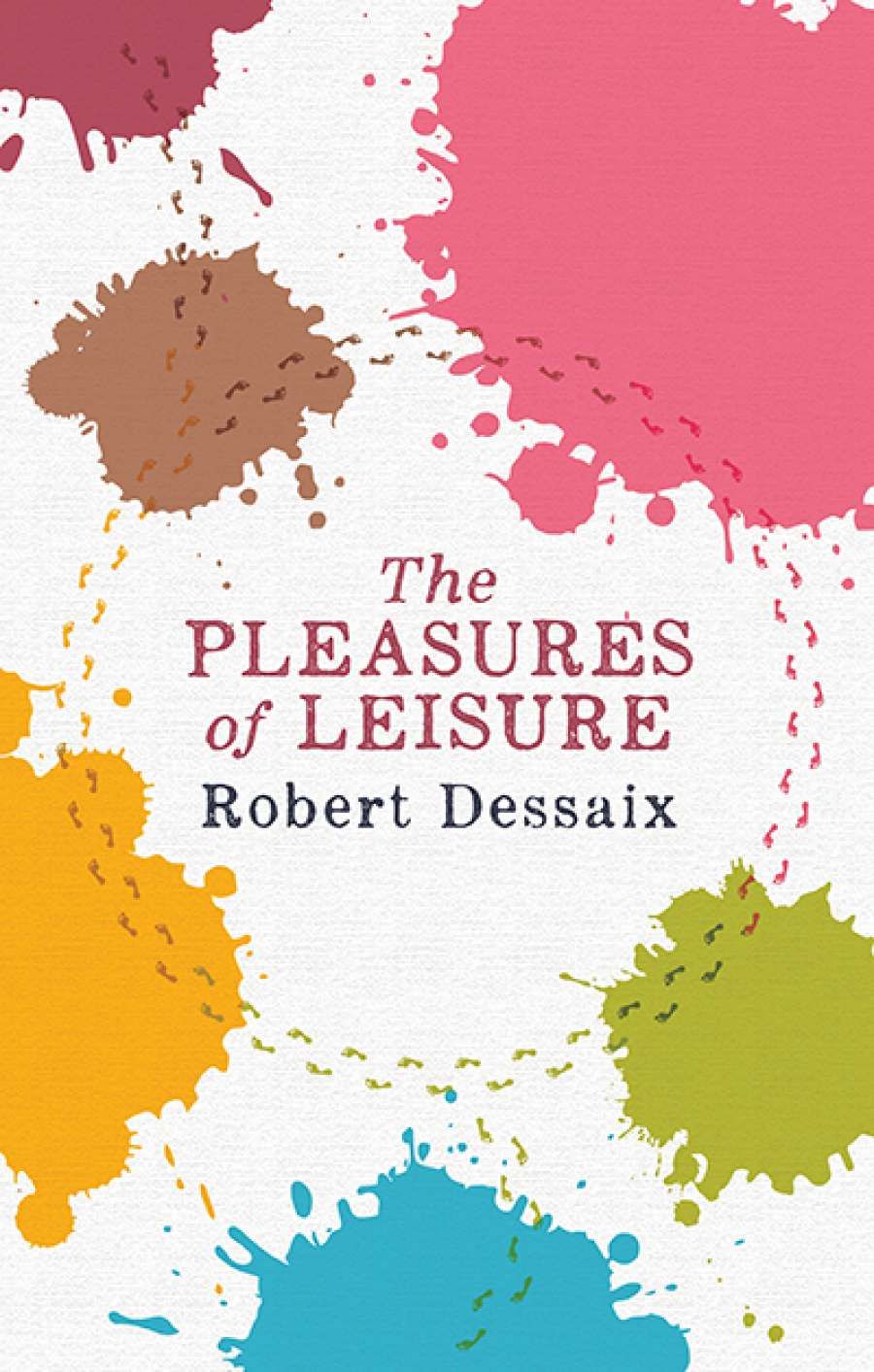
- Free Article: No
- Contents Category: Essay Collection
- Custom Article Title: David McCooey reviews 'The Pleasures of Leisure' by Robert Dessaix
- Review Article: Yes
- Online Only: No
- Custom Highlight Text:
The Last Resort (1986), a photobook by Martin Parr, includes a photograph of a woman sunbaking in the English seaside resort of New Brighton. The woman is lying, facedown and topless, on a concrete ramp, directly in front of the caterpillar tracks of a gigantic excavator ...
- Book 1 Title: The Pleasures of Leisure
- Book 1 Biblio: Knopf $29.99 pb, 218 pp, 9780143780045.
Dessaix’s framing of his project in terms of a cultural crisis (‘There is disquiet spreading rapidly across the globe about empty time’) strikes me, however, as half-hearted and largely evidence-free. Happily, this polemical framework is largely ignored, and Dessaix tends more profitably towards autobiography and cultural history. In the latter mode, for instance, he touches on the idea of walking for reasons other than travel, trade, or conquest. William and Dorothy Wordsworth, Dessaix notes, were intent ‘on enjoying being in nature, not on traversing it’.
While not uninterested in the material causes of leisure culture, Dessaix tends to ignore one of its key drivers: children. As anyone with small children knows, countless leisure activities stem from having children. For parents, the weekend – that temporal headquarters of leisure-time – is especially fraught because, as Rachel Cusk puts it in A Life’s Work (2001), ‘Weekends are when children don’t go to school.’ But Dessaix doesn’t ignore children, or at least childhood, altogether. He reminisces on his own childhood, and his memory of playing Monopoly is characteristically amusing: ‘I loved its strong appeal to the baser instincts, naturally, its snobbery, its genteel viciousness and the piles of brightly coloured cash.’ Such a sentence demonstrates Dessaix’s skilful deployment of a camp style, appropriately enough given that leisure – like camp – is performative, self-conscious, and strategically confuses the serious and the frivolous. And like leisure itself, camp is a response to boredom. ‘The relation between boredom and Camp taste cannot be overestimated,’ Susan Sontag wrote in her 1964 essay on camp. As Sontag also noted, camp (again like leisure) is the product of affluent societies. One must have both money and time – things always dyadically structured in capitalist societies – to avoid labour, a point Dessaix repeatedly returns to.
Of course, some forms of leisure are cheaper or more expensive than others. While Dessaix attends to that barbaric and costly sport of the ‘leisured class’, hunting, the examples of pleasurable leisure detailed in the first half of the book are mostly comfortably domestic and generally cheap: drinking tea; meditating; looking; and conversing. The examples in the second half are similarly quotidian and potentially humble, but they can also be pursued with ‘brightly coloured cash’: walking; gardening; eating; shopping; and engaging in a hobby. Having sex, the book’s penultimate leisure activity, remains for most people putatively free.
But sex, like camp style and leisure, can become routine, devoid of the spontaneity of play. One of the strengths of The Pleasures of Leisure is its emphasis on leisure as a form of play. Here, Dessaix’s own playful nature makes itself felt. For instance, riffing on the idea that all cultural activities can be theorised as play, he produces a droll catalogue to demonstrate his point: ‘High Mass in St Peter’s, Pushkin’s poetry, paintball, Plato’s Symposium, the slanderous drumming contests of Eskimos, Monopoly ... a game of marbles, Mozart, Monet, the Mahabharata, The Book of Mormon (as well as the Book of Mormon), Madonna, and Maori tattoos’.
 Robert Dessaix Dessaix’s book is in part pleasurable because of its love of digression and apparent spontaneity. These things sometimes lead to redundancy, but redundancy is a feature of conversation, that leisurely communing with someone for the sake of it. Dessaix’s style, then, is central to this book, and his tastes – bourgeois and bookish as they are – strike the right note for this kind of work. For those familiar with his earlier books, we also see him in a slightly new light. His love of French and Russian language and literature is evident, but we see it à la maison. We encounter the author, for instance, reading an Algerian novel in French – some light reading – while in his home, which is surrounded by Tasmanian bushland.
Robert Dessaix Dessaix’s book is in part pleasurable because of its love of digression and apparent spontaneity. These things sometimes lead to redundancy, but redundancy is a feature of conversation, that leisurely communing with someone for the sake of it. Dessaix’s style, then, is central to this book, and his tastes – bourgeois and bookish as they are – strike the right note for this kind of work. For those familiar with his earlier books, we also see him in a slightly new light. His love of French and Russian language and literature is evident, but we see it à la maison. We encounter the author, for instance, reading an Algerian novel in French – some light reading – while in his home, which is surrounded by Tasmanian bushland.
Dessaix is at his best when talking about such linguistic-domestic pleasures, but he can also be entertaining when discussing things to which he is antipathetic, such as organised sport. At any rate, I find such writing pleasurable, since pleasure (like leisure) is a profoundly personal thing – a sense of style or taste, as Dessaix implies. But, as Parr’s photograph reminds me (and Dessaix too, if more gently), the opportunities for leisure afforded to us are not wholly ours to choose or create. The fun available to us could be reading a French novel before a bucolic view, or it could be lying on a concrete ramp beside a piece of heavy equipment.


Comments powered by CComment